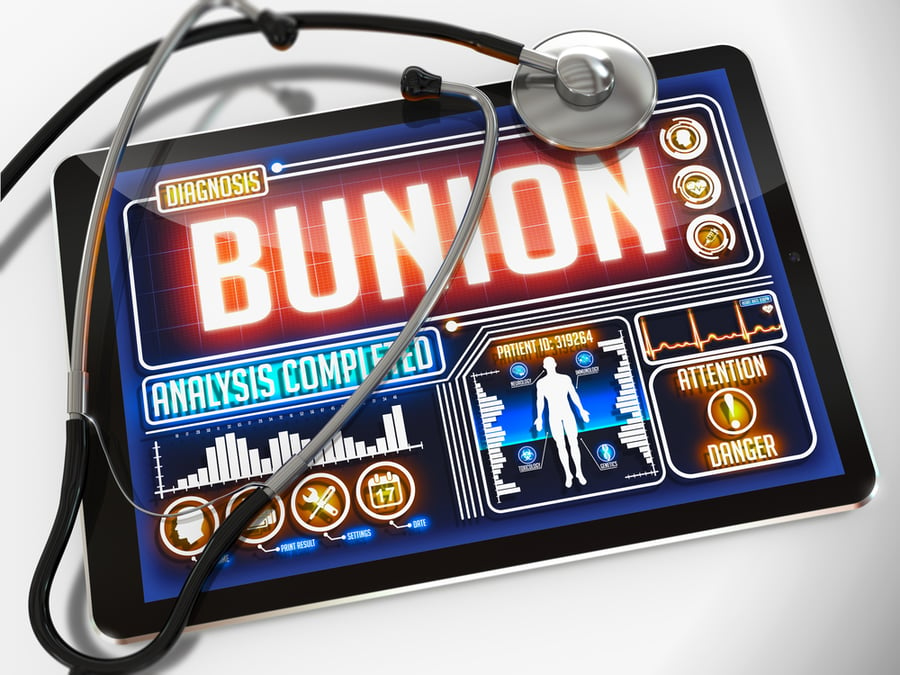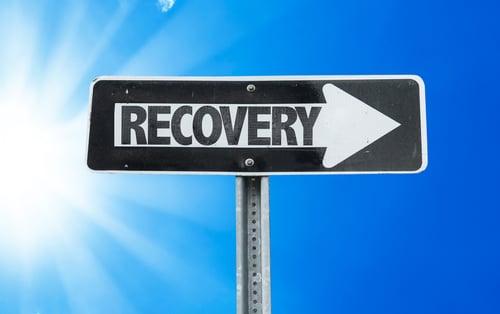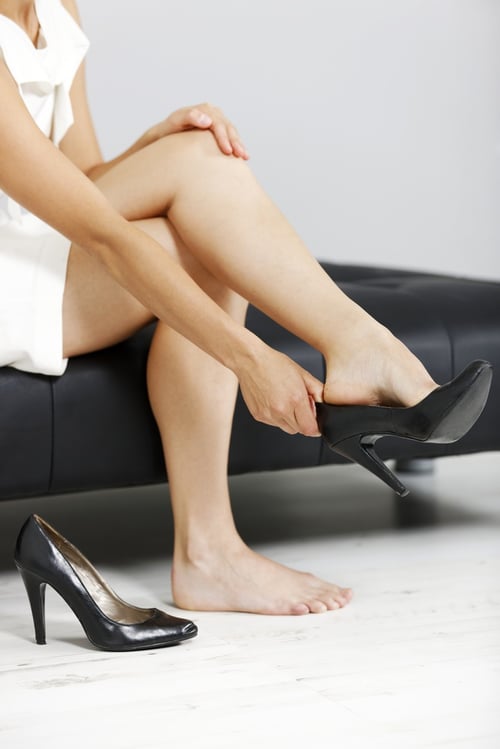Understanding Bunions: A Patient's Guide to Foot Health

Bunions, while often associated with discomfort and changes in foot appearance, can be a manageable condition with the right knowledge and care.
A bunion is a bony bump that forms at the joint at the base of the big toe. It occurs when the big toe leans towards the second toe, causing the joint to protrude and form a noticeable bump on the side of the foot.
“It occurs when some of the bones in the front part of your foot move out of place. This causes the tip of your big toe to get pulled toward the smaller toes and forces the joint at the base of your big toe to stick out. The skin over the bunion might be red and sore,” explains The Mayo Clinic.
Bunions Can Range from Mild to Severe
Bunions (also called Hallux Valgus) can range from mild to severe and may cause pain, discomfort, or difficulty finding comfortable shoes.
If you suffer from bunions, you are not alone as The Cleveland Clinic estimates that as many as one-third of Americans have this common foot ailment, including reported cases by celebrities such as Jennifer Lopez, Victoria Beckham, Amy Adams, Oprah Winfrey, and more.
As you can see from the above list, women are more likely to get bunions than men with the National Institute of Health reporting that “bunions are far more common in women than in men – probably because they tend to have weaker connective tissue in their feet and are more likely to wear tight, high-heeled shoes.”
Regardless of how common bunions are, they should be taken seriously.
“Bunions need treatment if they cause pain. Even if it’s a simple solution like changing the kinds of shoes you’re wearing, you still need to see a healthcare provider or podiatrist to diagnose a bunion,” says The Cleveland Clinic.
What Causes a Bunion to Form?
Several factors contribute to the development of bunions, including:
- Genetics: A family history of bunions increases the likelihood of developing them.
- Foot Structure: Abnormal foot mechanics or a foot shape that puts excessive pressure on the big toe joint can lead to bunions.
- Footwear: Wearing tight, narrow, or high-heeled shoes can contribute to bunion formation or exacerbate existing bunions.
As for those high-heeled shoes, there is some disagreement on what role they play in bunion development.
“Experts disagree on whether tight, high-heeled or too-narrow shoes cause bunions or whether footwear simply contributes to the development of bunions,” says The Mayo Clinic. “Bunions might be associated with certain types of arthritis, particularly inflammatory types, such as rheumatoid arthritis.”
The Cleveland Clinic also adds that the way you walk (your foot mechanics) could cause bunions as well as standing for a long time or working on your feet.
People with a history of foot injuries, including athletes, are also susceptible to bunions, which explains why NBA stars such as Shaquile O’Neal, Charles Barkley, LeBron James, Tim Duncan, Kevin Love, and Dirk Nowitzki all had publicized cases of bunions.
How do I Know I Have Bunions?
Often symptoms can mirror several different conditions so how can you be sure if you have bunions?
Common symptoms of bunions include:
- A visible bump at the base of the big toe: This is often the most noticeable sign.
- Pain or soreness: Especially when walking or wearing certain shoes.
- Swelling and inflammation: Around the big toe joint.
- Restricted movement: Difficulty moving the big toe.
- Corns or calluses: these often develop where the first and second toes rub against each other.
- Difficulty wearing certain types of shoes: Or pain that gets worse when you’re wearing shoes.
- Numbness: In or around your big toe.
- Hammertoes: Painful, tight toe tendons and joints.
What Can I Do to Help If I Have a Bunion?
There are several things you can do if you suspect you have a bunion including:
- Choose Comfortable Footwear: Opt for shoes with a wide toe box and low heels to reduce pressure on the big toe joint.
- Use Pads or Inserts: Cushioning pads or orthotic inserts can help distribute pressure more evenly.
- Apply Ice: Applying ice to the bunion can help reduce inflammation and alleviate pain.
While these strategies can help manage your bunion pain, they will not make your bunions go away.
“No, bunions don’t just go away, and you can’t fix bunions on your own. See a healthcare provider or podiatrist if you have a bunion. They’ll diagnose it and suggest treatments to relieve your symptoms,” advises The Cleveland Clinic.
Why Bunions Need Close Monitoring
While bunions are often manageable, they should be closely monitored as complications may arise, including:
- Bursitis: Inflammation of the fluid-filled sacs (bursae) near the joint.
- Hammertoe: The deformity of the second toe that often accompanies bunions.
- Metatarsalgia: Pain and inflammation in the ball of the foot.
- Osteoarthritis: A common type of arthritis that affects your foot joints.
The Mayo Clinic advises that “although bunions often require no medical treatment, see your doctor or a doctor who specializes in treating foot disorders (podiatrist or orthopedic foot specialist) if you have:
- Ongoing big toe or foot pain.
- A visible bump on your big toe joint.
- Decreased movement of your big toe or foot.
- Difficulty finding shoes that fit properly because of a bunion.
Treatment Options for Bunions
Once you have made your appointment with your podiatrist or other foot specialist, you can expect them to go over the following treatment options with you:
- Non-Surgical Approaches: Lifestyle changes, footwear modifications, and orthotic devices.
- Medications: Pain relievers or anti-inflammatory medications.
- Physical Therapy: Exercises to improve foot strength and flexibility.
- Bunion Surgery: In cases where non-surgical options are ineffective or for severe bunions.
“A healthcare provider will diagnose a bunion with a physical exam. They’ll examine your foot and ask about your symptoms. Tell your provider when you first noticed a bump near your big toe or if certain activities make your symptoms worse,” says The Cleveland Clinic. “You might need to visit a podiatrist — a provider who specializes in caring for your feet.”
Advantages and Disadvantages of Bunion Surgery
Like any surgery, bunion surgery will only be considered after other options have been exhausted. Here are the advantages and disadvantages of opting for bunion surgery:
Bunion Surgery Advantages:
- Pain Relief: Surgery can alleviate chronic pain associated with bunions.
- Improved Foot Function: Correcting the deformity can enhance foot function.
Bunion Surgery Disadvantages:
- Recovery Time: Healing and rehabilitation may take several weeks to months.
- Risks of Surgery: As with any surgery, there are potential risks and complications.
It's essential to consult with a healthcare professional for an accurate diagnosis and personalized treatment plan tailored to your specific situation.
With proper care and attention, bunions can be managed effectively, allowing you to maintain foot health and overall well-being.
For more information on treating your bunions, reach out to the doctors certified by the American Board of Foot and Ankle Surgery at Sweeney Foot & Ankle Specialists in The Woodlands and Magnolia areas of Houston today.






